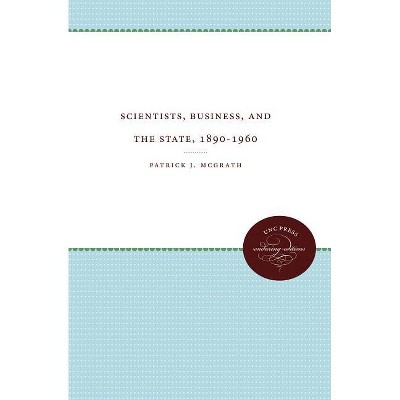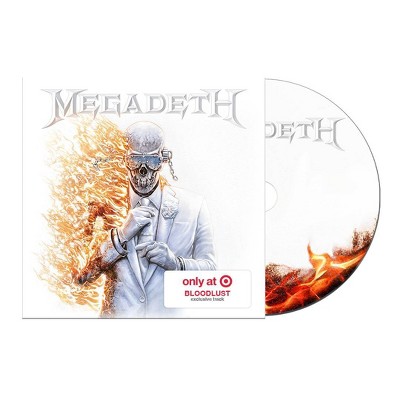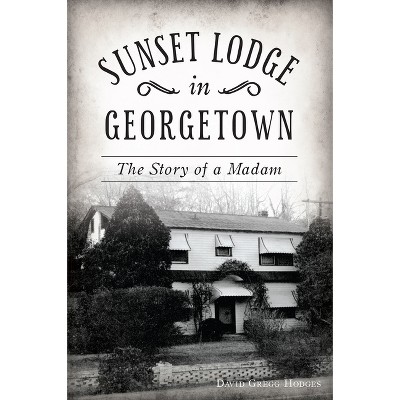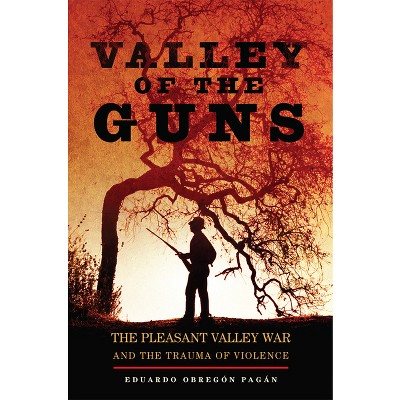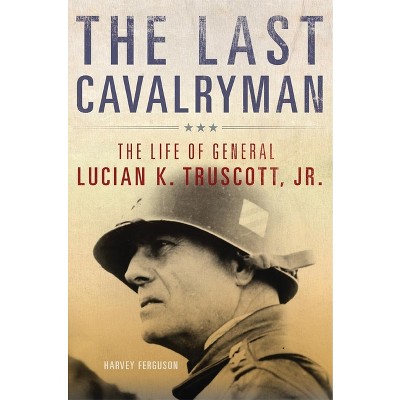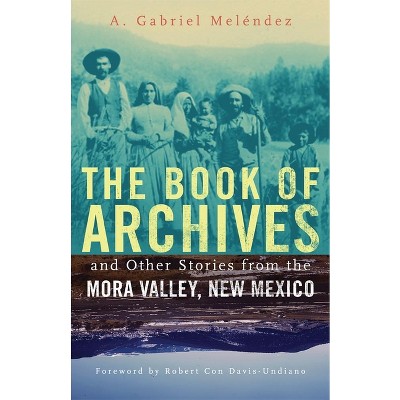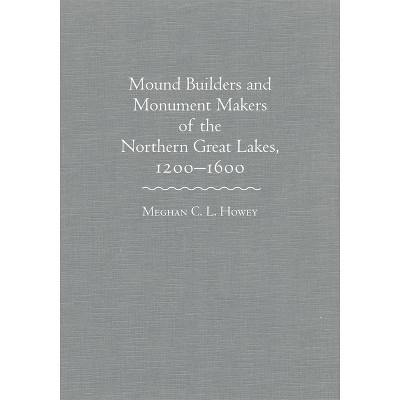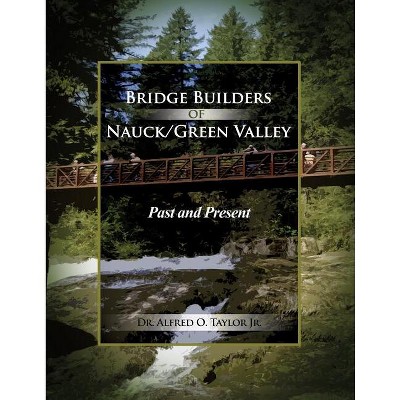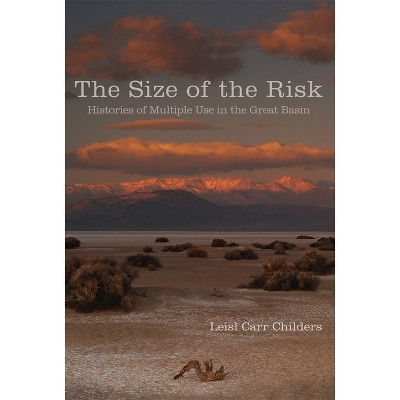Sponsored

Rainbow Bridge to Monument Valley - by Thomas J Harvey (Paperback)
$21.95
In Stock
Eligible for registries and wish lists
Sponsored
About this item
Highlights
- A cultural history of America's red rock desert landmarks The Colorado River Plateau is home to two of the best-known landscapes in the world: Rainbow Bridge in southern Utah and Monument Valley on the Utah-Arizona border.
- Author(s): Thomas J Harvey
- 256 Pages
- History, United States
Description
About the Book
The Colorado River Plateau is home to two of the best-known landscapes in the world: Rainbow Bridge in southern Utah and Monument Valley on the Utah-Arizona border. Twentieth-century popular culture made these places icons of the American West, and advertising continues to exploit their significance today. In Rainbow Bridge to Monument Valley, Thomas J. Harvey artfully tells how Navajos and Anglo-Americans created fabrics of meaning out of this stunning desert landscape, space that western novelist Zane Grey called "the storehouse of unlived years," where a rugged, more authentic life beckoned.Book Synopsis
A cultural history of America's red rock desert landmarks The Colorado River Plateau is home to two of the best-known landscapes in the world: Rainbow Bridge in southern Utah and Monument Valley on the Utah-Arizona border. Twentieth-century popular culture made these places icons of the American West, and advertising continues to exploit their significance today. In Rainbow Bridge to Monument Valley, Thomas J. Harvey artfully tells how Navajos and Anglo-Americans created fabrics of meaning out of this stunning desert landscape, space that western novelist Zane Grey called "the storehouse of unlived years," where a rugged, more authentic life beckoned. Harvey explores the different ways in which the two societies imbued the landscape with deep cultural significance. Navajos long ago incorporated Rainbow Bridge into the complex origin story that embodies their religion and worldview. In the early 1900s, archaeologists crossed paths with Grey in the Rainbow Bridge area. Grey, credited with making the modern western novel popular, sought freedom from the contemporary world and reimagined the landscape for his own purposes. In the process, Harvey shows, Grey erased most of the Navajo inhabitants. This view of the landscape culminated in filmmaker John Ford's use of Monument Valley as the setting for his epic mid-twentieth-century Westerns. Harvey extends the story into the late twentieth century when environmentalists sought to set aside Rainbow Bridge as a symbolic remnant of nature untainted by modernization. Tourists continue to flock to Monument Valley and Rainbow Bridge, as they have for a century, but the landscapes are most familiar today because of their appearances in advertising. Monument Valley has been used to sell perfume, beer, and sport utility vehicles. Encompassing the history of the Navajo, archaeology, literature, film, environmentalism, and tourism, Rainbow Bridge to Monument Valley explores how these rock formations, Navajo sacred spaces still, have become embedded in the modern identity of the American West-and of the nation itself. Thomas J. Harvey is a reporter for the Salt Lake Tribune and co-editor of Imagining the Big Open: Nature, Identity, and Play in the New West.Review Quotes
"Rainbow Bridge to Monument Valley provides a captivating analysis of the meaning Anglos and Indians have made from two of the West's most iconic sites. In exploring these spaces and their place in the American and the Navajo imagination, Thomas J. Harvey makes a significant contribution to the cultural history of the American West and the nation."--David Wrobel, author of Promised Lands: Promotion, Memory, and the Creation of the American West
"Thomas J. Harvey's work on the Utah-Arizona border region . . . will stake out new intellectual terrain for scholars seeking to explore the relationship between geography, cultural nationalism, and Occidentalism in twentieth-century America. . . . Harvey shows quite clearly how layers of meaning continue to be attached to the region and how modern mythmaking is perpetuated."Carter Jones Meyer co-author of Selling the Indian: Commercializing and Appropriating American Indian Cultures
Dimensions (Overall): 8.9 Inches (H) x 5.9 Inches (W) x .8 Inches (D)
Weight: .85 Pounds
Suggested Age: 22 Years and Up
Number of Pages: 256
Genre: History
Sub-Genre: United States
Publisher: University of Oklahoma Press
Theme: State & Local, West (AK, CA, CO, HI, ID, MT, NV, UT, WY)
Format: Paperback
Author: Thomas J Harvey
Language: English
Street Date: October 31, 2011
TCIN: 88982160
UPC: 9780806143217
Item Number (DPCI): 247-57-6549
Origin: Made in the USA or Imported
If the item details aren’t accurate or complete, we want to know about it.
Shipping details
Estimated ship dimensions: 0.8 inches length x 5.9 inches width x 8.9 inches height
Estimated ship weight: 0.85 pounds
We regret that this item cannot be shipped to PO Boxes.
This item cannot be shipped to the following locations: American Samoa (see also separate entry under AS), Guam (see also separate entry under GU), Northern Mariana Islands, Puerto Rico (see also separate entry under PR), United States Minor Outlying Islands, Virgin Islands, U.S., APO/FPO
Return details
This item can be returned to any Target store or Target.com.
This item must be returned within 90 days of the date it was purchased in store, shipped, delivered by a Shipt shopper, or made ready for pickup.
See the return policy for complete information.
Frequently bought together

$18.88
MSRP $27.00
Buy 1, get 1 50% off select books
4.8 out of 5 stars with 575 ratings
Trending Non-Fiction

$15.68
Buy 1, get 1 50% off select books
4.8 out of 5 stars with 204 ratings

Highly rated
$19.31
was $20.98 New lower price
Buy 1, get 1 50% off select books
4 out of 5 stars with 65 ratings

$18.28
was $19.58 New lower price
Buy 1, get 1 50% off select books
4.7 out of 5 stars with 17 ratings

$4.59
MSRP $7.99
Buy 1, get 1 50% off select books
4.8 out of 5 stars with 123 ratings

$6.20
MSRP $10.95
Buy 1, get 1 50% off select books
4.8 out of 5 stars with 33 ratings

$7.09
MSRP $9.99
Buy 1, get 1 50% off select books
4.9 out of 5 stars with 46 ratings
